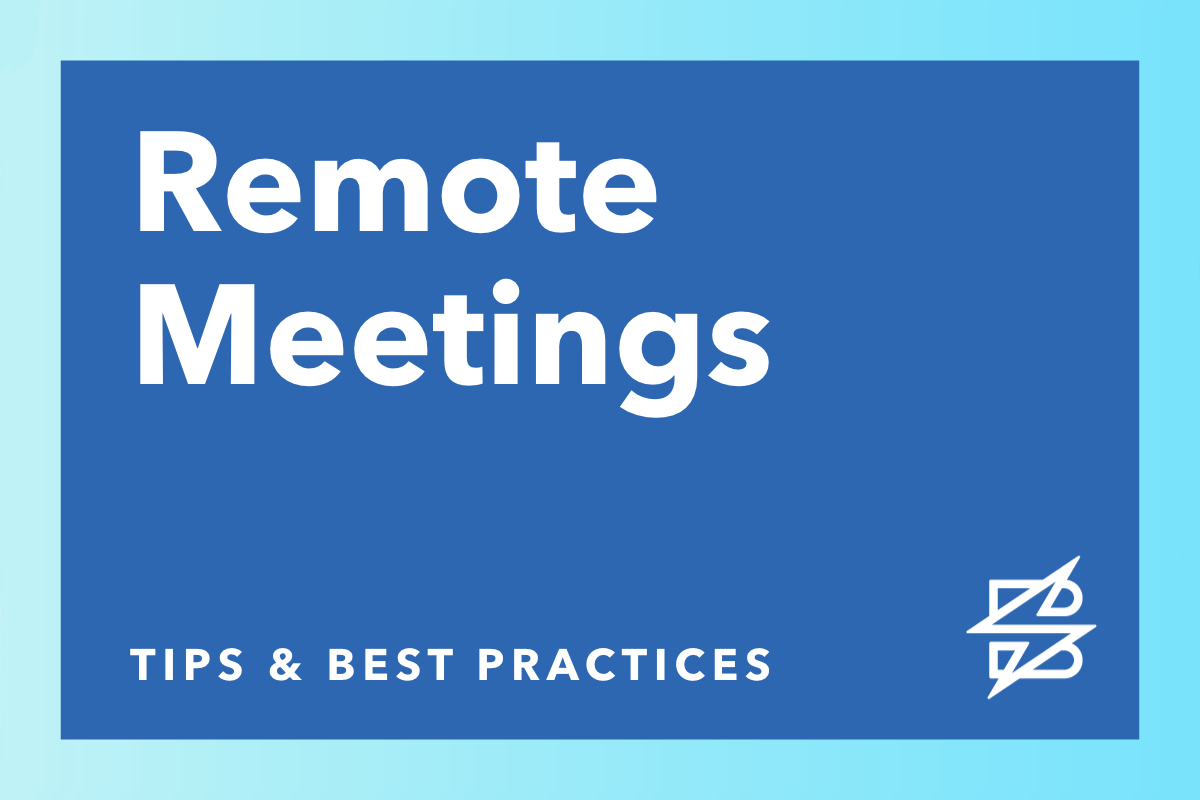I’m a remote work believer. I better be since I’ve been full-time remote for large and small organizations since 2002. Sparkbox has a central office in Dayton, a presence in Pittsburgh, and remote employees across the country, so I’m in good (long-distance) company here.
Today, the need to prioritize the health of employees and their communities has resulted in a (likely temporary) explosion of new remote workers. I’ve enjoyed reading many articles about how to dress when you work from home, where to set up your desk, how to keep from snacking all day, and how to maintain your sanity if you’ve never worked on your own before. (My two cents: don’t wear pajamas, find a quiet corner, at least make them healthy snacks, and get up to stretch every hour or so.)
For my part, I’d like to focus on how remote meetings can impact client relationships. Our team is going 100% remote starting today, and many of our clients are also accustomed to operating in multiple locations. Being fully distributed won’t have a lot of impact on how we use Slack or Trello or other platforms for collaboration. Those practices and tools are in place, as they likely are for many of you. But it can have an impact on meetings. And meetings, whether face to face or remote, are one of our most important opportunities to advance a project and build strong partnerships. As we move into this new phase, here are some of the best practices that we’re keeping in mind for making meetings highly effective and enjoyable, even when we have so many locations that we move into Brady Bunch territory on screen.
Location, Location
Sparkbox has clients all over the country, and as I mentioned, we were partially distributed to begin with. For most of our clients, additional remote locations will not require any adjustment. However, it’s a good idea to share that a change has been made and to give clients an opportunity to ask questions and raise any concerns they may have. We’re big believers in making sure we offer transparency and clarity about how we work. This falls right in line with that approach.
Test the Technology Beforehand
It’s distracting and disappointing to begin a meeting ten minutes late because you couldn’t get Zoom to work or because somebody was having trouble with a GoToMeeting plugin. If you’re going to have multiple remote participants in a meeting, offer to hop on a five-minute pre-call with them just to make sure that there are no technical issues. Or ask participants to log in five minutes early to do the same. Don’t let fiddling with technology take over the actual meeting time.
Don’t be Shy
Very few of us enjoy looking at a tiny thumbnail of our own poorly lit faces in the corner of a video conference screen. But being able to see each other—whether to give a smile of shared understanding or to acknowledge an expression of pure bewilderment—is absolutely critical when it comes to building relationships and solving problems. If you have a video option, use it. If you’re presenting design comps or sharing your screen for a demo, try to make sure your face is also visible. I promise nobody will care if you’re having a bad hair day.
Leave Room for Every Voice
When you’re at a meeting in person, you can easily tell when someone has a question or wants to jump in. In a remote meeting, you can’t see body language. And people sometimes forget that they’re muted. And cross talk is wildly confusing. So make sure that you pause to allow for input and/or take the time to intentionally ask participants for questions and comments. People feel better about meetings they participate in as opposed to ones they just sit in like spectators. This will also keep folks engaged in the conversation and not drifting away to check email or refresh a newsfeed.
Don’t get Distracted
On that note: do not check email or refresh a newsfeed. Yes, your mouse is right there! And it will only take a second! But your sidebar activity is actually very noticeable to your colleagues and your clients. It’s surprisingly easy to tell that you’re looking six inches left of where you started, and your interested nod of agreement has turned into a distracted “mmhmm.” So take steps to avoid distraction on a call. Close every unnecessary window before the call starts. Block Slack notifications. Turn your ringer off. Give your online collaborators the same respect and attention that you would give them in person.
Leave Time for Chat
I’ve noticed for years that in-person meetings tend to begin with “How was your weekend?” while remote meetings jump right into the agenda. But it’s those human moments that give us a sense of being a part of a team. We care about the people on the other side of the table, not just the work. (Bonus: caring about the people actually makes the work better.) So if you’re facilitating a remote call, leave time to say “how are you?” and mean it. Share something of yourself and invite others to do the same. Particularly in times like this, we could all use a human moment.
Working with evolving technology has prepared our team to tackle the complicated situation we’re in today, which continues to change from moment to moment. We’re accustomed to adjustments in the way we relate to team members, colleagues, and clients. Whatever the medium, the objective is the same: to work together toward a common goal. This week, like every week, that’s what we’ll be focused on.

